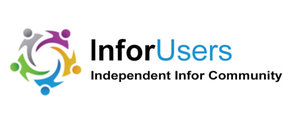Emerging Digital Appliances Often Lack Standards for Interoperability
Many emerging technology environments end up with disjointed capabilities for connections with IT environments or other devices. This results in tremendous waste for consumers as these solutions may be more prone to technical obsolescence and replacement costs. In many cases, the rush to get a digital appliance to market with a minimum viable market design results in early versions of solutions that may not support future user needs or the ability to create appropriate technology or data connections with other digital solutions. In these environments, standards are often a follow-on process that are driven by consumer demand and need.
A great example of this was the early launch of digital glucometers on the market over a decade ago. The Continua Health Alliance was formed from several glucometer vendors to create a standard for these devices to share data with IT environments.
COVID-19 has become the catalyst for driving higher levels of digital technology adoption to support telehealth, telemedicine, and home health care. As healthcare moves to create an interoperable environment via CMS regulations, the US healthcare system is transforming into a data-driven environment that is needed to reduce costs and improve care quality. Consumers will expect their digital healthcare devices to easily connect and share data with their providers directly or via their smart home systems. These challenges will be significantly reduced for smart home solutions with an emerging standard.
Smart Home Standards That Will Improve RPM
Apple, Google, Amazon, and Zigbee are joining together to launch a new standard for developing digital appliances that interact with their smart home solutions. This new standard is called Connected Home Over IP (CHIP). Apple has open sourced some components of its HomeKit Accessory Development Kit (ADK) to help expedite the development of digital accessory product with this standard. Google is promoting this standard to also include digital applications on mobile phones and for interactions with cloud environments. Google believes this standard with IP will eliminate the need for routers and wired networks that complicate the smart home environments today. Bluetooth Low Energy protocols and Thread (IEEE 802.15.4 network protocol) will likely become more established for communications with accessory devices for the smart home solutions.
Smart home standards for connecting accessories will help reduce the risk for consumers for purchasing digital remote monitoring devices that will improve healthcare protocol compliance, remote patient monitoring (RPM), and the ability to share their medical data more easily and securely with their providers.
Currently, smart home solutions are acquired by the middle and higher economic classes of citizens. However, as these environments evolve to also become the gateways for streaming services, they could replace the cable boxes that exist for most economic classes in this country. Conversely, the cable companies could evolve their services to become smart home solutions. The ability to provide real-time medical monitoring of consumers in their home environments will provide a significant advancement for healthcare access and quality.
Alexa Says, “Time for Your Medicine”
Smart home solutions are becoming personal assistants for consumers to support their daily activities. The ability to add healthcare functions to these environments will establish a new remote patient monitoring capability that can also be complimented with medical content to support patient compliance with their current therapies. The smart home solutions could be linked to CHIP-compliant medical devices that would automatically capture and transmit patient data to providers that will likely improve chronic disease outcomes. These solutions could also monitor patient compliance with their medication accessories (e.g., digital pill containers) or exercise devices connected via CHIP. Alexa could become a medical nag!
Smart Home Device Companies
Smart home solution companies will continue to expand consumer services via standards for connecting digital accessories. Representative companies include:
- Apple Home app: an iOS environment that connects applications and devices compliant with Apple’s HomeKit framework.
- Google Nest: the Google Android smart home assistant solution.
- Amazon Echo: the Amazon smart home solution that includes Alexa as the smart assistant.
Success Factors
- Healthcare organizations that plan to connect to patients via smart home solutions now need to ensure that the medical accessories used are CHIP compliant.
- Smart home connections with providers should be approached with a prototype mentality to thoroughly test out the capabilities for using these environments to extend patient care effectively and safely.
- Successful interoperability by providers with smart home solutions should be heavily marketed to drive competitive advantage.
Summary
The smart home environment is well positioned to help providers extend their patient care services and remote patient monitoring capabilities. COVID-19 has created a “woke” environment for patient-focused care globally. Home health care will continue to grow as a significant healthcare delivery service that will improve patient satisfaction, reduce healthcare costs, and increase patient safety and expected outcomes.
As large technology companies such as Amazon, Apple, and Google continue to focus their digital solutions and cloud environments to support new digital healthcare solutions, the rate of adoption of these solutions by consumers will continue to grow. Healthcare organizations that are patient focused will begin to establish medical data sharing services with smart home solutions to create a new channel for effectively engaging patients in their care. As smart home solutions continue to expand their healthcare support capabilities and services, they may be well positioned to become the personal health record environment for their customers.
“Every once in a while, a new technology, an old problem, and a big idea turn into an innovation.”
Dean Kamen
Photo Credit: Adobe Stock, AndSus


